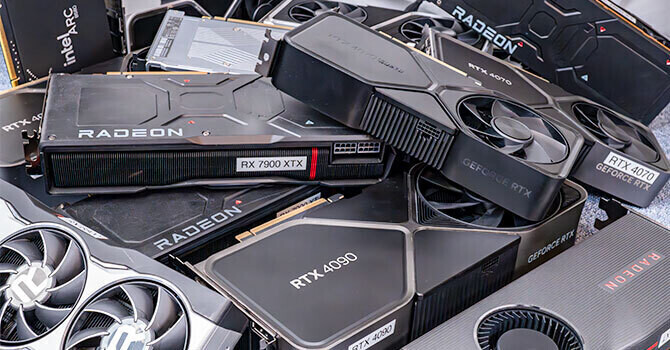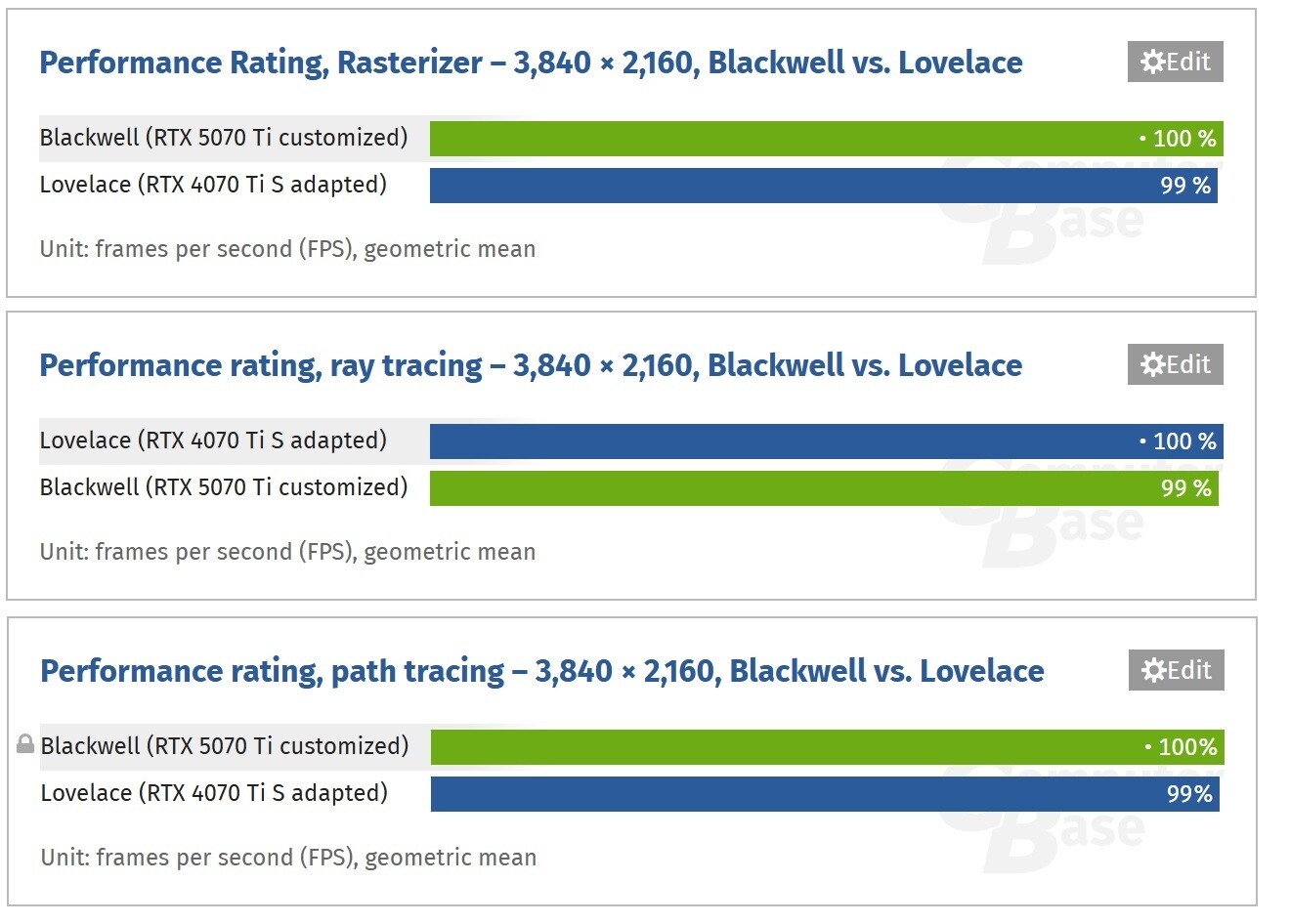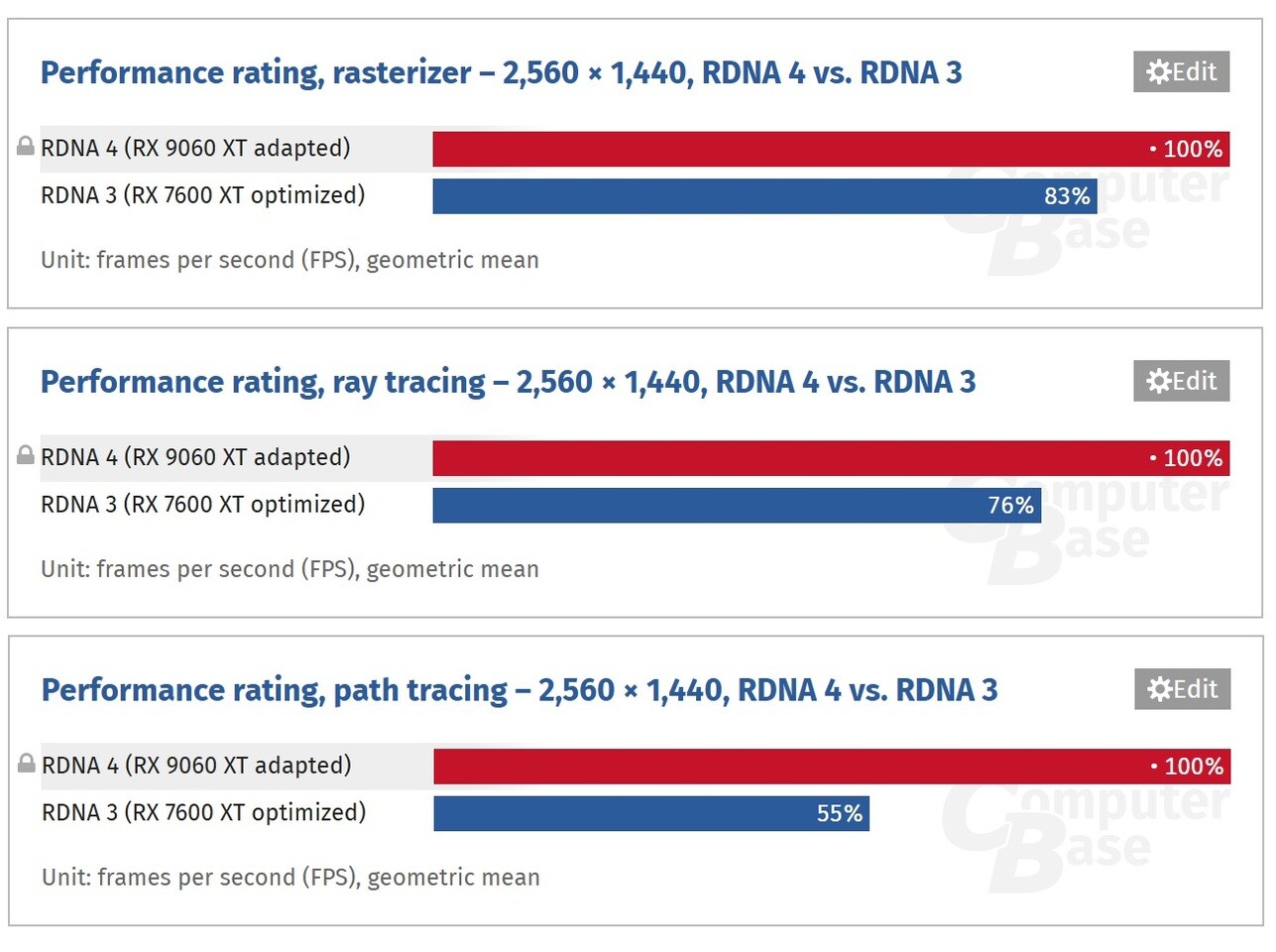Instructions per clock (IPC) is a commonly used metric to evaluate and compare CPU architecture performance. However, ComputerBase, a group of tech enthusiasts, decided to explore IPC improvements in GPUs by comparing current and past generations. The test pitted NVIDIA's Blackwell-based GeForce RTX 50 series against the Ada Lovelace-based RTX 40 generation, and AMD's RDNA 4-powered Radeon RX 9000 lineup against the RDNA 3-based RX 7000 series.
For NVIDIA, the test utilized the RTX 5070 Ti and 4070 Ti SUPER, matching ALU counts and clock speeds while disregarding memory bandwidth differences. On the AMD side, the test compared the RX 9060 XT to the RX 7600 XT, both with identical ALUs and GDDR6 memory. By carefully aligning shader counts and accounting for clock variations, ComputerBase was able to isolate IPC improvements from other hardware enhancements.
In rasterized rendering tests across 19 popular titles, NVIDIA's Blackwell architecture showed only a 1% IPC advantage over the older Ada Lovelace, which could be within normal benchmark variance. Ray tracing and path tracing benchmarks did not reveal any significant IPC uplift, indicating that the latest generation performs similarly to its predecessor when adjusted for clock and unit count.
In contrast, AMD's RDNA 4 demonstrated a significant IPC leap. Rasterized performance improved by approximately 20% compared to RDNA 3, while ray-traced workloads saw a 31% gain. Path tracing results were even more impressive, with RDNA 4 delivering nearly double the FPS, a 100% increase over its predecessor. These results suggest that NVIDIA's performance enhancements are largely driven by higher clock speeds, increased execution unit counts, and improved features, while AMD's RDNA 4 represents a substantial architectural advancement, marking its most significant IPC gain since the original RDNA launch.


